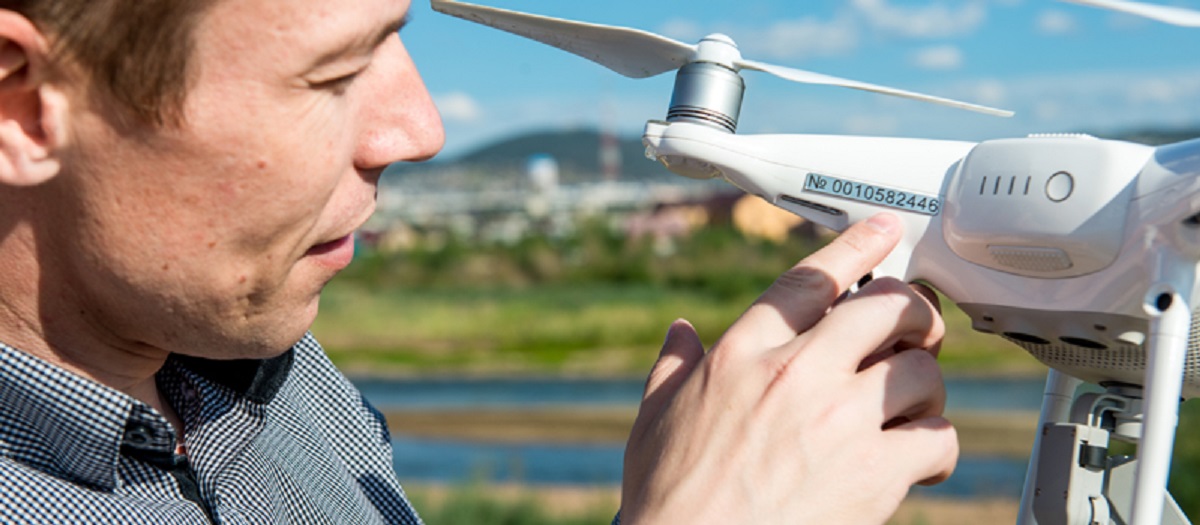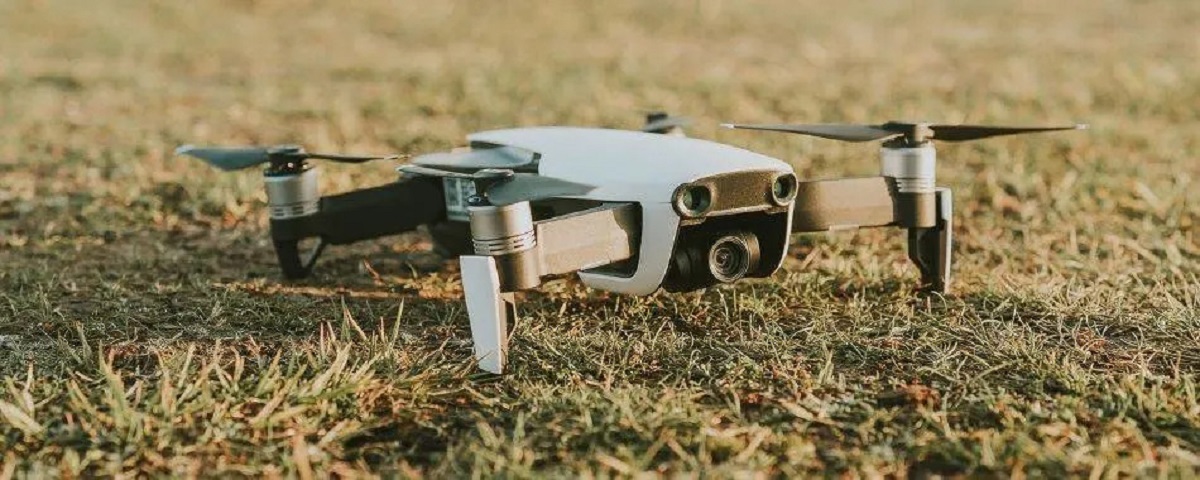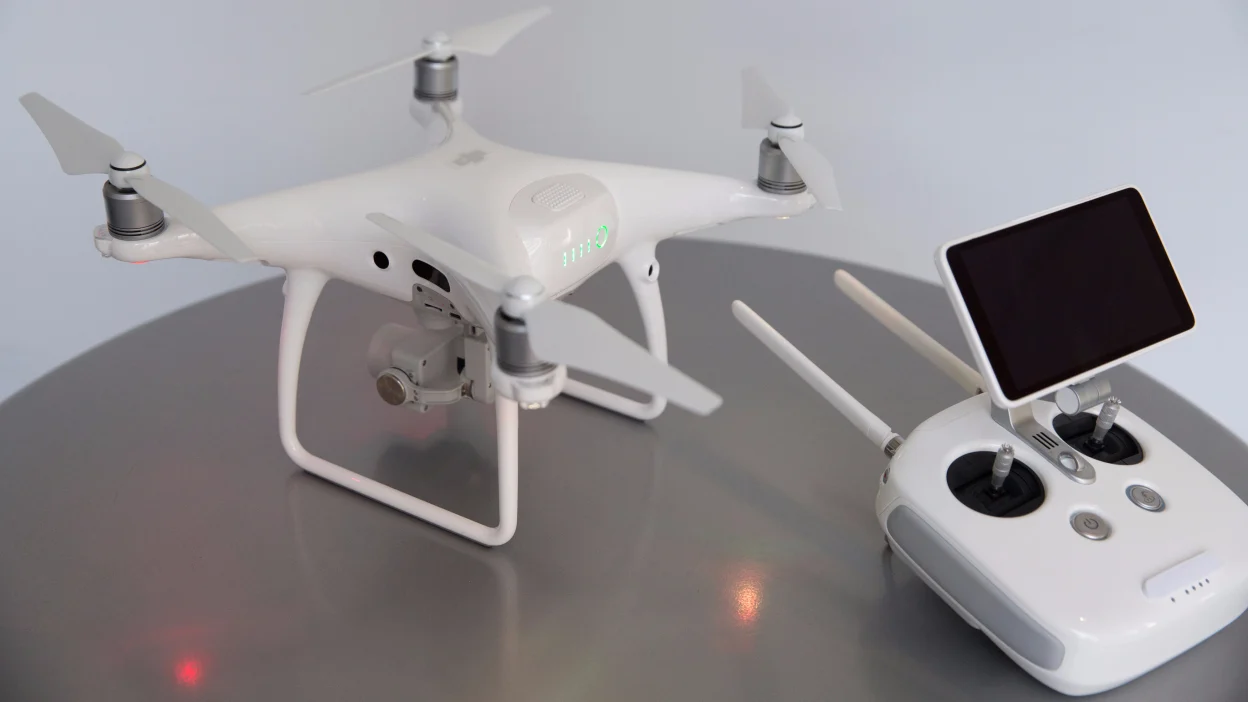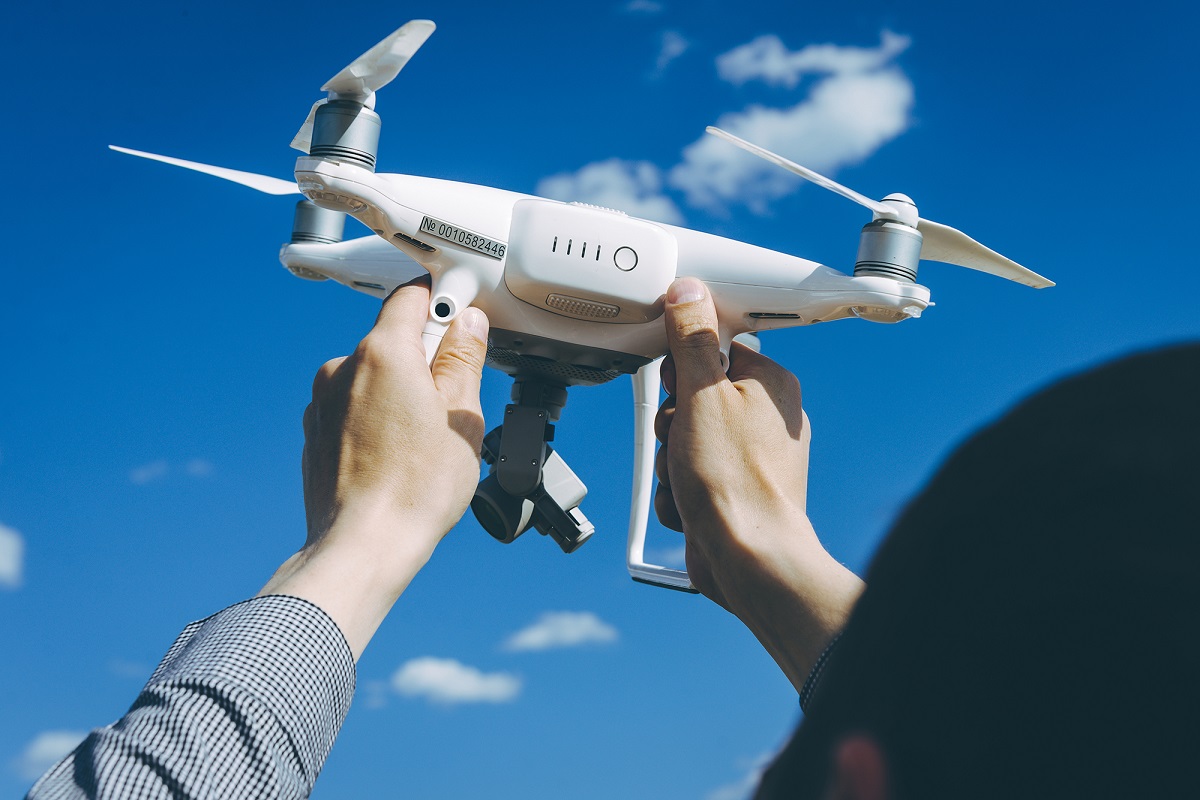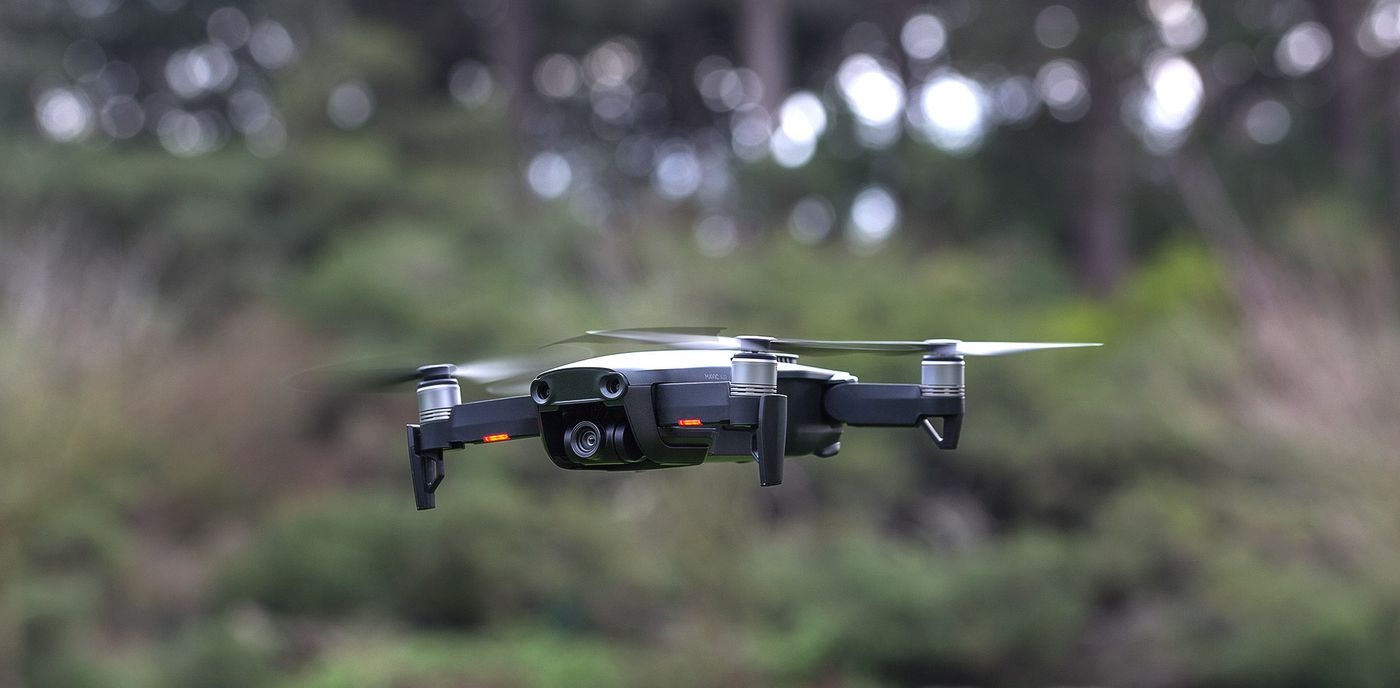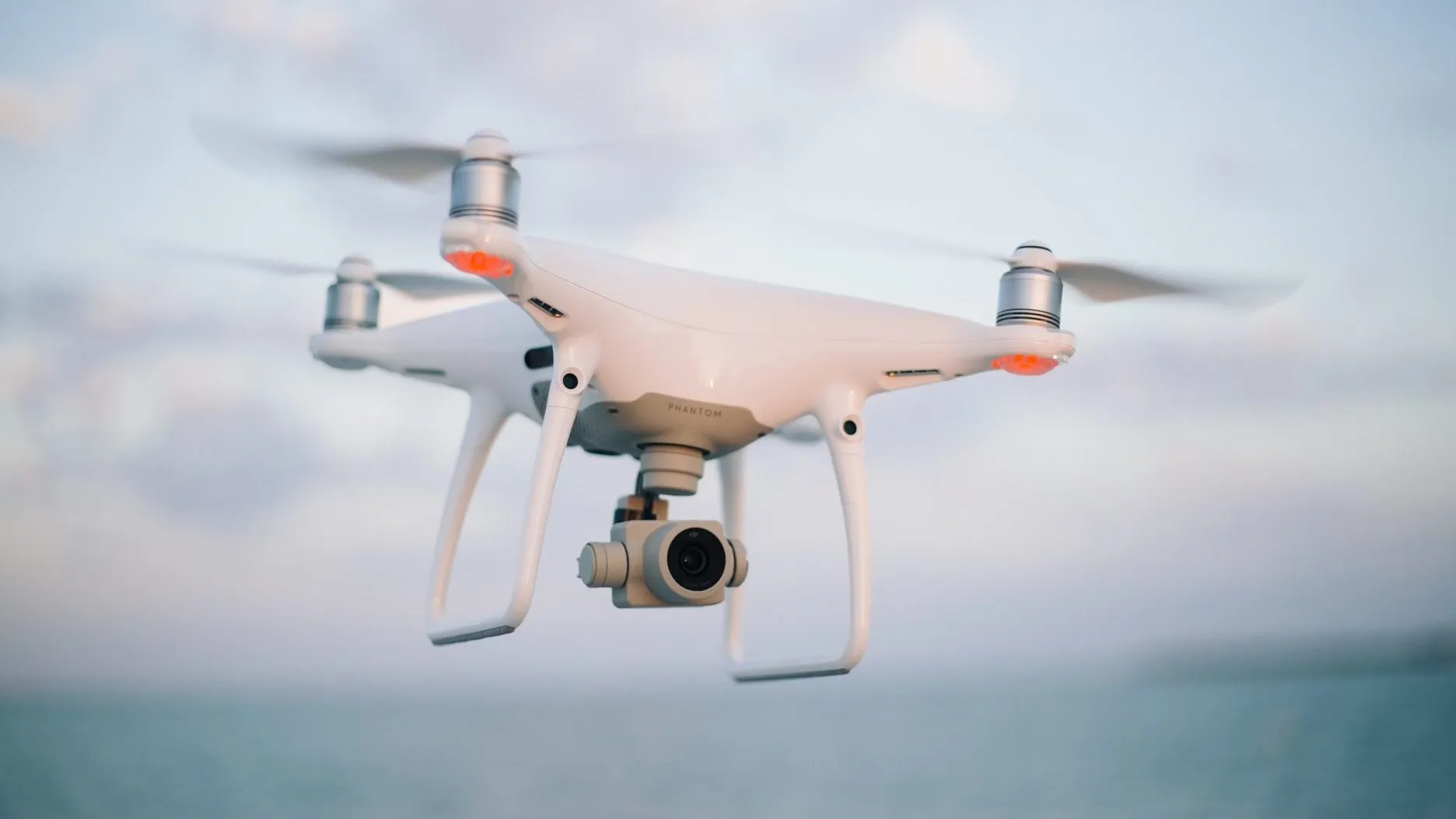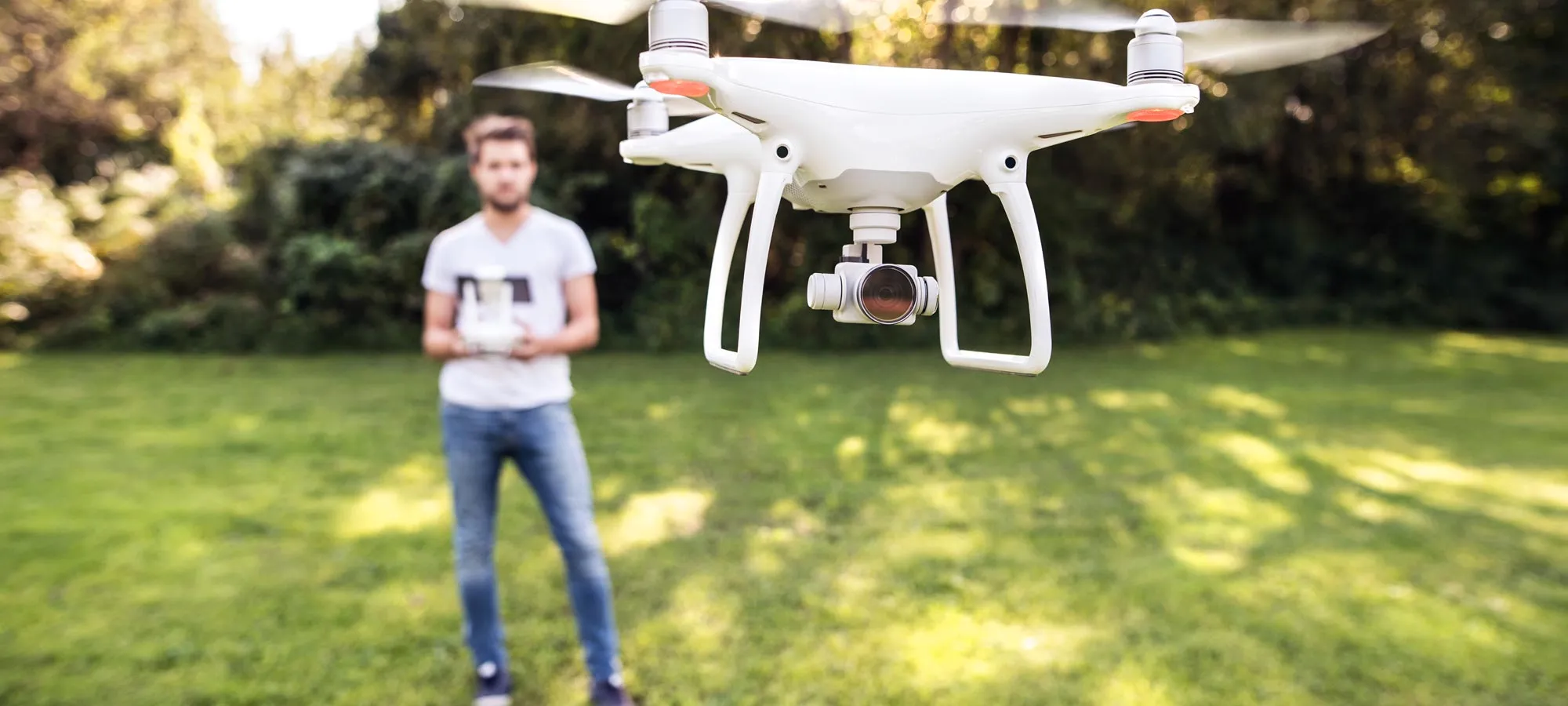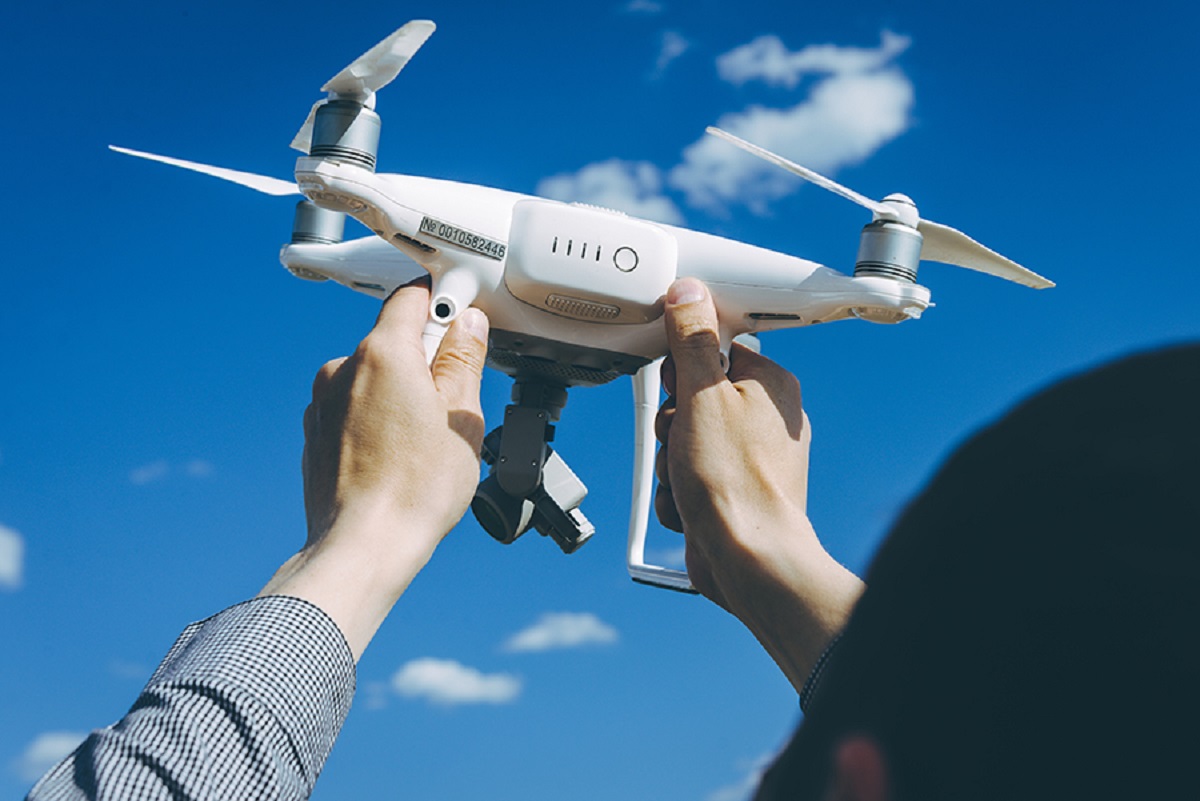Introduction
Welcome to the world of drones, where technology and innovation collide to bring us exciting opportunities for aerial exploration, photography, and videography. As drone usage continues to soar, it is important to understand the regulations and requirements set forth by aviation authorities. One such requirement is the need for drone registration.
Drone registration is a process that allows authorities to keep track of the growing number of unmanned aircraft in the skies. It assists in promoting safe and responsible drone operation while ensuring public safety. Registering your drone also gives you a legal standing as a responsible drone pilot, allowing you to reap the benefits of flying within the confines of the law.
When it comes to drone registration, you might be wondering where exactly you should display your registration number. In this article, we will explore the importance of displaying the registration number and provide you with some guidelines on where you should put it on your drone to comply with the regulations.
It is crucial to note that the regulations regarding drone registration may vary from country to country. Therefore, it is always advisable to check with your local aviation authority to ensure you are following the correct procedures.
Now, let’s delve into the significance of displaying your drone registration number and find out the best places to put it.
Why Drone Registration is Required
Drone registration is a fundamental requirement enforced by aviation authorities around the world. It serves several important purposes:
- Promoting Safety: The primary reason for drone registration is to ensure the safety of both airspace users and the general public. By registering your drone, you are acknowledging your responsibility as a drone pilot to operate within established guidelines and regulations. This helps prevent incidents and accidents involving drones.
- Accountability: Drone registration allows authorities to identify the owner of a drone in case of any violation or incident. It establishes a link between the drone and its operator, creating a sense of accountability and discouraging illegal activities.
- Control and Monitoring: By registering your drone, aviation authorities can gather data on the number, type, and location of drones in operation. This information is crucial for managing airspace and developing policies that facilitate the safe integration of drones into the existing aviation infrastructure.
- Privacy Protection: Drone registration helps in safeguarding privacy rights by enabling authorities to identify and take appropriate action against individuals who may misuse drones for intrusive or illegal activities. It acts as a deterrent, promoting responsible drone use and respecting the privacy of individuals.
- Insurance and Liability: Some insurance providers require proof of drone registration to offer coverage. Registering your drone can provide you with the necessary documentation to protect yourself against any liability in case of accidents or damages caused by your drone.
Overall, drone registration is a crucial step towards ensuring the safe and responsible operation of drones. It not only promotes a culture of accountability among drone pilots but also helps in maintaining a balance between innovation and public safety.
The Importance of Displaying the Registration Number
Displaying the registration number on your drone is a vital step in complying with the regulations and ensuring safety and accountability. Here’s why it is important:
- Identification: By prominently displaying the registration number on your drone, it becomes easily identifiable. In case of any incident or violation, authorities can quickly trace the drone back to its owner and take appropriate action. This helps in maintaining a responsible and transparent drone community.
- Easy Verification: Law enforcement officers and aviation authorities have the right to inspect your drone at any time. By having the registration number displayed, they can easily verify your compliance with the regulations. This streamlines the process and avoids any unnecessary complications or delays.
- Public Safety: Displaying the registration number on your drone contributes to public safety. In case of an emergency or unauthorized drone operation, witnesses or concerned individuals can report the drone to the appropriate authorities using the registration number. This aids in quickly addressing any potential risks or threats to public safety.
- Preventing Theft and Loss: Drones are valuable investments, and unfortunately, they can be targets for theft. By displaying the registration number, it becomes easier to identify and recover a stolen or lost drone. Additionally, it helps deter thieves from stealing registered drones, as they are traceable and can significantly reduce the resale value.
- Compliance and Legal Standing: By displaying the registration number, you are demonstrating your compliance with the regulations and your commitment to responsible drone operation. This not only helps maintain a positive image for the drone community but also ensures that you are operating within the bounds of the law. It gives you a legal standing and protects you from potential fines or penalties for non-compliance.
Overall, displaying the registration number on your drone is not only a legal requirement but also a crucial step in promoting safety, accountability, and responsible drone operation. It plays a significant role in protecting public safety, facilitating easy verification, and ensuring a positive drone community for everyone to enjoy.
Where to Put the Drone Registration Number
It is important to display the drone registration number in a visible and easily accessible location on your drone. The exact placement may vary depending on the design and model of your drone, but here are some common suggestions:
- Exterior of the Drone: The most common and recommended location to display the registration number is on the exterior of the drone. This could be on the body or frame of the drone, where it is easily visible from all angles. Ensure that the number is large enough to be read easily.
- Inside the Battery Compartment: For some drones, it may be possible to place the registration number inside the battery compartment. While it might not be as visible as the exterior placement, it still serves the purpose of displaying the number and can be a good alternative.
- On the Landing Gear: If your drone has landing gear, another option is to place the registration number on the legs or struts. This allows for easy visibility and avoids any interference with the drone’s functionality.
- Underneath the Propellers: Placing the registration number underneath the propellers can be an effective way to ensure visibility without obstructing the drone’s aesthetic design. However, make sure the number is still clearly visible when the propellers are spinning.
- On the Drone Controller: Some drone pilots choose to display the registration number on their drone controller. While this is not the primary location, it serves as an additional reference point and can be useful in case the drone and controller get separated.
- On the Drone Case or Bag: If you often transport your drone in a case or bag, it can be helpful to have the registration number displayed on the exterior of the case or bag. This ensures that the registration information is always with the drone and easily accessible when needed.
Remember to choose a location that is not easily removable or prone to damage. The registration number should be securely affixed to the drone to prevent it from getting lost or detached during flight.
It’s essential to follow the regulations specific to your country or region when determining where to place the registration number. Some authorities may have additional guidelines or restrictions on placement to ensure optimal visibility and identification of the drone.
By displaying the registration number in a prominent and accessible location, you not only adhere to the regulations but also contribute to the overall safety and accountability of the drone community.
Exterior of the Drone
One of the most common and recommended locations to display the drone registration number is on the exterior of the drone itself. This ensures that the number is easily visible and identifiable from various angles. Here are some key points to consider when placing the registration number on the exterior:
- Placement: Look for a flat and unobstructed area on the body or frame of the drone where the registration number can be affixed. This could be on the top, sides, or rear of the drone, depending on its design and available space.
- Size and Legibility: Ensure that the registration number is large enough to be easily read from a reasonable distance. Legibility is crucial for authorities and observers to identify your drone in compliance with the regulations. Using contrasting colors between the number and the drone’s surface can further enhance visibility.
- Secure Affixing: Use adhesive-backed vinyl numbers or decals that adhere firmly to the drone’s surface. Make sure the registration number is securely attached, as it should withstand the vibrations and movements experienced during flight. Avoid placing the number on areas that are prone to damage or contact during flight.
- Visibility: Consider the drone’s design and any visual obstructions that may affect the visibility of the registration number. Ensure that the number is placed in a location where it will not be covered by other components, such as propellers or camera mounts. It should be clearly visible from all sides of the drone, allowing for easy identification.
- Weather Resistance: Choose materials or decals that are weather-resistant to ensure the durability and visibility of the registration number. Drones often operate in outdoor environments, exposing them to various weather conditions. The registration number should remain intact and legible under different weather circumstances, including rain, sunlight, and high humidity.
Remember to adhere to the specific guidelines set by your local aviation authority when placing the registration number on the exterior of the drone. Respect the regulations to promote accountability, safety, and responsible drone operation. By displaying the registration number prominently on the exterior, you contribute to creating a transparent and compliant drone community.
Inside the Battery Compartment
If you prefer a more discreet placement for your drone registration number, one option is to place it inside the battery compartment. While this location may not be as visible as the exterior of the drone, it still serves the purpose of displaying the registration number. Here are some important considerations when placing the number inside the battery compartment:
- Easy Access: Make sure the battery compartment is easily accessible for inspection by authorities or if you need to provide the registration number when required. You should be able to open the battery compartment without any tools or excessive effort.
- Label or Sticker: Use a vinyl label or sticker with the registration number on it. Place it in a prominent area inside the battery compartment, where it can be easily seen. Ensure that the label is securely adhered, and the number is legible, even when the compartment is closed.
- Visibility when Opened: Confirm that the registration number is clearly visible when you open the battery compartment. This is important for authorities to verify compliance without having to remove the battery or any other internal components.
- Protection from Moisture and Debris: Take precautions to protect the registration number from damage or degradation inside the battery compartment. Since drones are often exposed to various environmental elements, ensure that the label or sticker is weatherproof, resistant to moisture and debris, and remains intact over time.
- Secondary Placement: It’s a good practice to have a secondary placement of the registration number on the exterior of the drone, in addition to placing it inside the battery compartment. This ensures that the number is visible in case the battery compartment is not easily accessible or inspection requires external verification.
While placing the registration number inside the battery compartment offers a more discreet option, it’s important to note that authorities may still request external visibility during inspections. Be sure to follow the specific guidelines of your local aviation authority regarding the placement of the registration number. By placing the number inside the battery compartment, you demonstrate your commitment to complying with the regulations and maintaining a responsible approach to drone operation.
On the Landing Gear
Placing the drone registration number on the landing gear is another viable option for displaying the information. The landing gear provides a visible and accessible location that doesn’t interfere with the drone’s functionality. Consider the following factors when placing the registration number on the landing gear:
- Visible Location: Look for a flat and unobstructed area on the landing gear where the registration number can be affixed. Ensure that the number is easily visible from different angles, including when the drone is on the ground or in flight.
- Size and Legibility: The size of the registration number should be appropriate for the landing gear’s surface area. Make sure the number is large enough to be easily read from a reasonable distance. High contrast between the number and the landing gear’s color can enhance legibility.
- Secure Attachment: Use adhesive-backed vinyl numbers or decals that securely adhere to the landing gear. Ensure that the registration number remains in place, even during takeoff, landing, or rough handling. Double-check the adhesion to avoid any risk of detachment during flight.
- Consider Propeller Clearance: Take into account the clearance between the landing gear and the propellers, especially if the drone has a lower-mounted or retractable landing gear design. Ensure that the registration number placement does not obstruct the propellers’ rotation or pose any safety risks.
- Protection from Wear and Tear: Keep in mind that the landing gear may come into contact with various elements during landing, such as dirt, grass, or rough surfaces. Choose materials or decals that are durable, weather-resistant, and can withstand these conditions without deteriorating the registration number’s legibility.
Placing the registration number on the landing gear provides a visible and accessible location that helps in easy identification of your drone. However, it’s important to remember that certain drones may have landing gear that retract during flight or might have design restrictions that limit the available space for displaying the number. Always refer to the guidelines provided by your local aviation authority to ensure compliance with the regulations.
By displaying the registration number on the landing gear, you contribute to a culture of accountability and responsible drone operation while maintaining the aesthetic integrity of your drone.
Underneath the Propellers
Placing the registration number underneath the propellers may be an unconventional but effective option for displaying the information. This placement allows for visibility without obstructing the drone’s aesthetic design. Consider the following points when placing the registration number underneath the propellers:
- Clear Visibility: Determine a location underneath the propellers where the registration number is fully visible. This may be on the body or the arms of the drone, ensuring that the number can be read even when the propellers are spinning.
- Size and Contrast: Use appropriately sized numbers that are clearly legible against the surface underneath the propellers. High contrast between the number and the drone’s color scheme will enhance visibility, especially when the propellers are in motion.
- Secure Adhesion: Ensure that the registration number is securely attached and can withstand the vibrations and forces experienced during flight. Use adhesive-backed vinyl numbers or decals that provide reliable adhesion to the drone’s surface.
- Inspect for Obstruction: Before placing the registration number underneath the propellers, carefully inspect for any potential obstructions or interference with the propeller’s rotation. Avoid placing the number on areas that might come into contact with the propellers, as this could lead to safety hazards or damage to the number.
- Weather Resistance: Consider the exposure to various weather conditions that drones often encounter during flight. Ensure that the materials or decals used for the registration number are weatherproof, resistant to moisture, and can withstand these conditions while maintaining legibility.
While placing the registration number underneath the propellers may not adhere to traditional placements, it can still be an effective way to comply with the regulations while preserving the drone’s visual appeal. Always follow the guidelines provided by your local aviation authority to ensure proper placement and compliance with the regulations.
By displaying the registration number underneath the propellers, you contribute to the accountability and safety of the drone community, allowing for easy identification of your drone in case of any incidents or inspections.
On the Drone Controller
Displaying the registration number on the drone controller can serve as an additional reference point for identification purposes. While this may not be the primary location, it can be a useful backup in case the number on the drone itself is not easily visible. Consider the following factors when placing the registration number on the drone controller:
- Visible Location: Find a suitable area on the controller where the registration number can be affixed. This could be on the back of the controller, near the screen, or any other visible surface that does not obstruct the pilot’s view or interfere with the controller’s functionality.
- Size and Legibility: Ensure that the registration number is large enough to be easily read without straining the eyes. The number should be clearly legible, even in varying lighting conditions, to facilitate quick verification and identification.
- Secure Attachment: Use vinyl labels or stickers that securely adhere to the controller’s surface. Make sure that the registration number remains in place during handling, transportation, and usage of the controller. Avoid placing the number in areas that are frequently touched or prone to wear and tear.
- Non-Interference: Confirm that the placement of the registration number on the controller does not interfere with the operation or functionality of the buttons, switches, or joysticks. It should be placed in a location that is easily visible but does not impede the pilot’s ability to comfortably operate the controller.
- Weather Resistance: Choose materials that are durable and weather-resistant to ensure the longevity and legibility of the registration number on the controller. Consider that the controller may be used outdoors in various weather conditions, so the label or sticker should withstand exposure to elements like sunlight, moisture, and temperature changes.
Although the primary focus is on displaying the registration number on the drone itself, having the number on the drone controller can serve as a supplementary reference. It provides an additional way to identify the drone and verify compliance with the regulations if needed.
Always refer to the guidelines provided by your local aviation authority to ensure proper placement of the registration number and compliance with the regulations. By including the registration number on the drone controller, you contribute to the transparency and accountability of your drone operations.
On the Drone Case or Bag
Another option for displaying the drone registration number is on the exterior of the drone case or bag. This ensures that the registration information is always with the drone and easily accessible. Consider the following points when placing the registration number on the case or bag:
- Visible Placement: Look for a prominent and visible area on the case or bag where the registration number can be displayed. This could be on the top, sides, or front of the case, depending on the available space.
- Size and Legibility: Ensure that the registration number is large enough to be easily seen from a reasonable distance. Choose a font size and style that enhances legibility, even when viewing from a distance or in various lighting conditions.
- Secure Attachment: Use vinyl labels or decals that adhere securely to the case or bag’s surface. Make sure the registration number remains in place during transportation and handling, as well as exposure to environmental elements.
- Weather Resistance: Consider the weatherproofing of the materials or decals used for the registration number. The case or bag, along with the registration number, should withstand various weather conditions such as rain, sunlight, and humidity without causing damage or fading of the number.
- Protection and Durability: Ensure that the placement of the registration number on the case or bag does not compromise its integrity or interfere with opening, closing, or carrying. Be mindful of any zippers, handles, or compartments that may obstruct the visibility or legibility of the registration number.
- Backup Placement: Although placing the registration number on the case or bag is a secondary option, it is recommended to also display the number directly on the drone itself. This ensures that the number is easily visible for identification purposes, even if the drone is not in the case or bag.
By displaying the registration number on the drone case or bag, you provide an additional means of identification and comply with the regulations. It ensures that the registration information is always with the drone and easily accessible when needed.
Always consult the guidelines provided by your local aviation authority for specific requirements regarding the placement of the registration number. By adopting this approach, you contribute to the responsible and compliant operation of your drone.
Conclusion
Ensuring proper placement of your drone registration number is not only a legal requirement but also a crucial step in promoting safety, accountability, and responsible drone operation. By displaying the registration number in a visible and easily accessible location, you contribute to the overall transparency and integrity of the drone community.
Throughout this article, we explored various options for displaying the registration number on your drone. Whether you choose to place it on the exterior of the drone, inside the battery compartment, on the landing gear, underneath the propellers, on the drone controller, or on the drone case or bag, it is important to follow the specific guidelines set by your local aviation authority. These guidelines may include the size, visibility, and durability of the registration number, as well as any restrictions or additional recommendations for placement.
Remember that while certain placements may be more visible or practical, it is always beneficial to have a backup location or secondary display of the registration number. This helps ensure that the number is easily identifiable, regardless of the drone’s positioning or situation.
By complying with the regulations surrounding drone registration and displaying the number appropriately, you contribute to the promotion of a responsible and accountable drone community. This fosters a positive image for drones and supports the integration of drones into the existing aviation infrastructure.
As a drone pilot, take pride in your compliance with the regulations, respect the privacy and safety of others, and strive to be a responsible and considerate member of the drone community. Let the registration number serve as a symbol of your commitment to safe and responsible drone operations.







